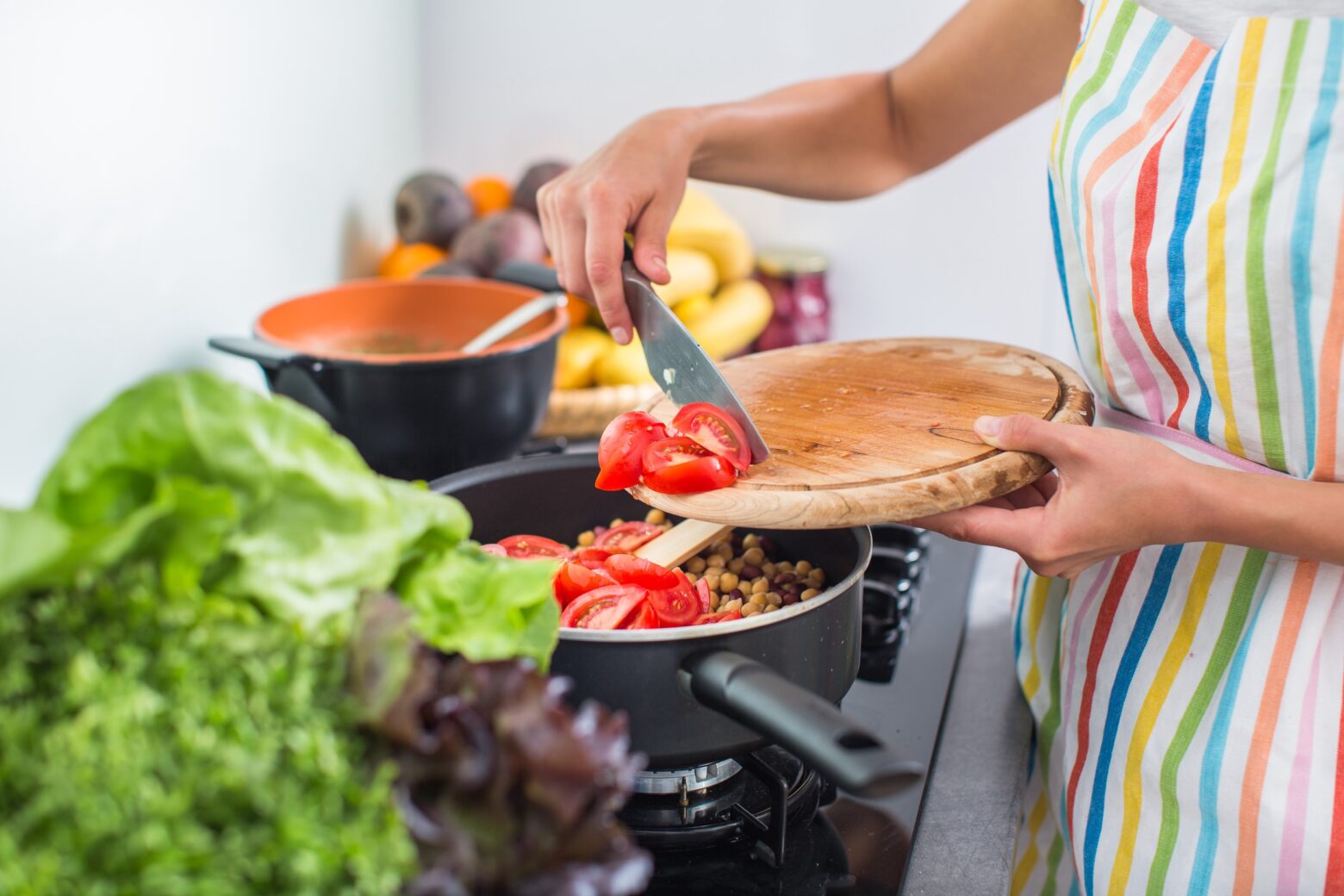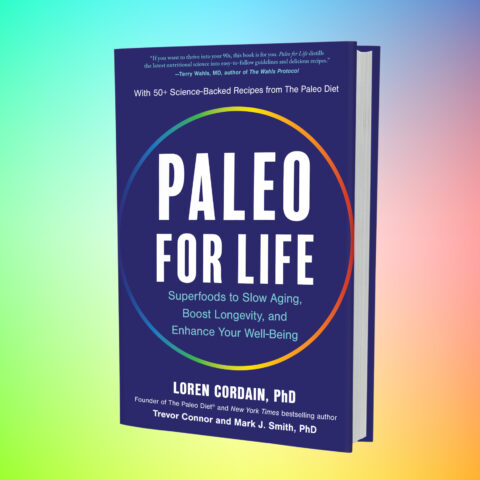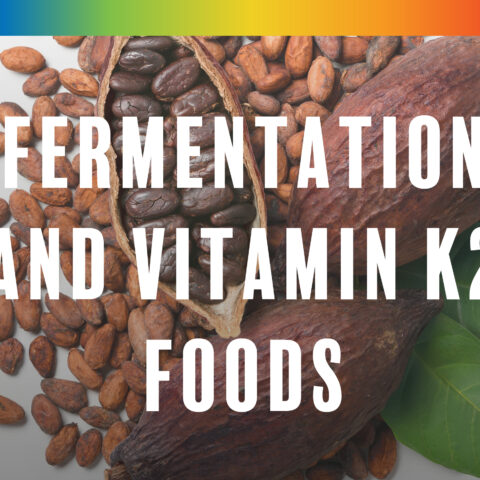Paleo: The Diet You Can Actually Stick With

Let us put it simply: Diets don’t work. Usually, when we try to force a fast result, like lose 10 pounds before an event or try to fit back into old jeans, we return to our old habits almost immediately.
Paleo is different. Instead of a short-term goal, we’re focusing on long-term health—a sustainable lifestyle that makes you feel your best.
Here’s what makes Paleo different from those fad diets out there.
Modern Paleo goes back to basics
Paleo is, at its heart, a community-oriented way of eating that harkens back to ancestral days of communal living. While we don’t want to go back to pre-technology (or at least I don’t!) or pre-medicine, many Paleo eaters are looking to regain health benefits by eating foods that are nutrient-dense and free from modern processing.
The introduction of convenience foods to the world coincides with the beginning of the obesity, diabetes, and heart disease epidemics. One way or the other, nutrition authorities agree that the modern American diet is lacking. Whether they advocate for low-fat, low-carb, or vegetarian diets, it’s clear that few people think we’ve landed on a healthy cultural eating pattern. [1, 2, 3, 4]
Yet, go back 100 years, and people weren’t dying from diabetes and heart disease. This is where critics of a Paleo diet say, “We don’t want to go back to what the ancestors did… they all died young!” The truth is, they didn’t all die young. In fact, the modal age (the most common age of death) in Paleolithic times was very similar to that of today.
That’s the beauty of modern Paleo eating. Today there’s emergency medicine, heated homes to protect us from the elements, clean water, and generally, enough food access. We’ve eliminated most of the reasons why our ancestors had shorter average lifespans. Yet we’ve added a huge positive change: disease and metabolic destruction from diet and lifestyle.
Health professionals quantify two things—age of mortality (death) and age of morbidity (the age at the onset of chronic disease.) While the age of mortality has gone up slightly, the age of morbidity has plummeted in modern times.
Why Paleo is easier to follow than other diets
Often, the first reaction many people have to a Paleo Diet is shock. When people find out what they won’t be eating, they often ask what’s left. But the reality is that a Paleo Diet is not about calorie restriction or deprivation. It’s about eating nutrient-dense, nourishing foods that make it almost impossible to overeat. Once you adapt to the change in the specific foods you’re eating, it’s actually a very satisfying food plan.
Research published in Nutrients in early 2020 examined how a Paleo Diet compared to other restrictive diets with regard to how well people were able to follow through. [5] The Paleo Diet actually showed a high level of adherence, with Paleo eaters saying that they found personal satisfaction, health benefits, and other personal preferences as a result (like more energy, weight loss, clearer skin, etc.).
Similar to vegan or vegetarian diets, those who chose to follow a Paleo plan did so for personal beliefs about food, which is probably one of the most important reasons why it has higher levels of follow-through. In the Nutrients study, Paleo eaters said that The Paleo Diet was important to them because eating processed foods were not a viable alternative.
Compared to other diets, Paleo dieters were most likely to say they were following it because of enjoyment (almost 18 percent in the study) and second-most likely to say that health was a major reason (nearly 54 percent).
The best ways to stick to a Paleo Diet
While Paleo eaters found enjoyment and health benefits in their food plan, the study also noted that it was ranked second for being labeled as hard to follow due to lack of willpower.
It’s true that shifting to a Paleo Diet from a standard American diet full of grains, processed foods, sweets, and convenience foods can be a major shock to the system. Without the right meal plans, support, and understanding from friends and family, the shift to a Paleo Diet might feel hard at first. Admittedly, it’s hard to give up foods that were designed to be addictive. They were also designed with little consideration for your health.
The good news is that there’s never been a better time to eat Paleo. There are more resources available now than ever before. When I started following a Paleo Diet 15 years ago, there were few Paleo-friendly restaurants, and there certainly weren’t loads of recipes splattered all over the internet.
Take advantage of the resources you have at your fingertips. Here are five tips to help you get started on a Paleo journey:
- Tell your friends and family what you’re doing and why you’re doing it.
- Have your family join you when they can. There are lots of meal options that can satisfy everyone’s tastes!
- Do some meal planning. Identify your favorite recipes, and keep those ingredients on hand so those meals are easy. Keep things fresh by introducing new recipes, too!
- Remember the 85/15 rule. Dr. Cordain, who wrote The Paleo Diet, notes that you can be successful when you’re Paleo 85 percent of the time. You don’t have to aim for absolute perfection. There’s flexibility built-in.
How I stuck with it
As someone who went Paleo years before anyone else in my family was eating this way, I can tell you there might be some meals at which you’re the only one eating meat and vegetables, while everyone loads up on pizza and pasta.
At times like that, it helped keep me going by remembering why I was doing it. Plus, once a week, you can join in for the pizza or pasta and still be 85 percent compliant.
After a year of Paleo eating, I felt so good that I truly didn’t want to go back. Now, 15 years in, I do eat “non-Paleo” foods sometimes, but the staples of my diet are ancestral, Paleo foods and I have no desire to go back to whatever I was doing before.
Once you get over the first big leap, I know you can do it, too.
References:
- Statovci, D., Aguilera, M., MacSharry, J., & Melgar, S. (2017). The Impact of Western Diet and Nutrients on the Microbiota and Immune Response at Mucosal Interfaces. Frontiers in immunology, 8, 838. https://doi.org/10.3389/fimmu….
- Huang, K. S., & Huang, S. W. (2011). Changes in the nutrient content of american diets. Health economics review, 1(1), 19.https://doi.org/10.1186/2191-1…
- Fuhrman J. (2018). The Hidden Dangers of Fast and Processed Food. American journal of lifestyle medicine, 12(5), 375–381. https://doi.org/10.1177/155982…
- Myles I. A. (2014). Fast food fever: reviewing the impacts of the Western diet on immunity. Nutrition journal, 13, 61. https://doi.org/10.1186/1475-2…
- Cruwys, T., Norwood, R., Chachay, V. S., Ntontis, E., & Sheffield, J. (2020). “An Important Part of Who I am”: The Predictors of Dietary Adherence among Weight-Loss, Vegetarian, Vegan, Paleo, and Gluten-Free Dietary Groups. Nutrients, 12(4), 970. https://doi.org/10.3390/nu1204…
Aimee McNew
Aimee McNew is a nutritionist and writer who focuses on women’s health, infertility, and postpartum wellness.
More About The Author




